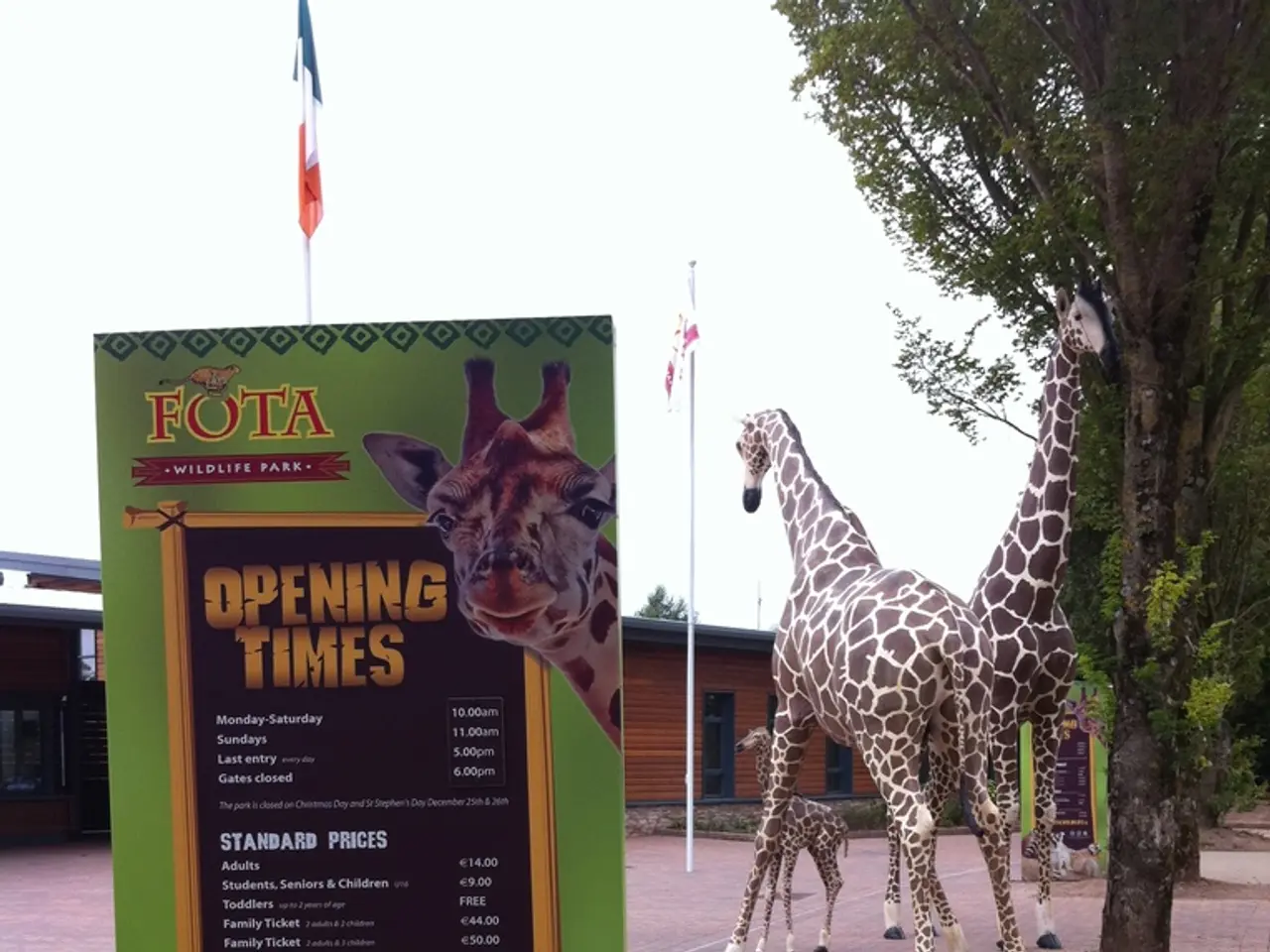Transformed Headline: 7 Innovative Approaches to Wildlife Recognition that Ignite Astonishment at the Local Level
Revolutionizing Wildlife Identification: The Power of AI and Technology
In an exciting leap forward for wildlife research and conservation, citizen science platforms are democratizing data collection, turning every outdoor enthusiast into a valuable contributor to scientific discovery. This technological revolution is making wildlife identification more accessible, precise, scalable, and less intrusive than ever before.
One of the key innovations is instant species identification using AI image recognition on smartphones. Apps like "Animal Identifier - AI Scanner" allow users to identify animals quickly by simply taking a photo. Advanced AI models and comprehensive species databases provide accurate, detailed information on a wide variety of fauna, including mammals, birds, reptiles, and insects. This immediate feedback fosters education and engagement, benefiting students, researchers, and nature enthusiasts alike.
Another significant advancement is AI-driven audio analysis for species identification. Tools such as DeepMind’s Perch 2.0 analyze vast audio recordings of wildlife sounds to detect, identify, and even estimate populations of species from environmental soundscapes. This technology speeds up conservation monitoring and enables the detection of elusive or hidden species that might be difficult to spot visually.
The use of drones, particularly thermal imaging drones, is another game-changer for remote wildlife tracking. Equipped with thermal sensors, these drones enable researchers to track animals in difficult-to-access habitats with minimal disturbance, capturing real-time data on movements and behavior across ecosystems. This technology supports monitoring of endangered species and ecosystem-level studies, including climate change impacts.
Integration of traditional knowledge and mobile data collection is also playing a crucial role. In places like Nunavut, hunters use smartphone apps like the SMART app to document wildlife sightings, track travel routes in changing environments, and upload detailed observational data. This supports community-based wildlife management and knowledge transfer between generations while incorporating modern technology into traditional practices.
User-friendly, conservation-conscious design is another essential aspect of these modern identification apps. For example, bird song identification apps like Chirpomatic use AI to identify species via audio while minimizing disturbance to wildlife with features like bird-safe sound playback and night modes. This balances technology benefits with ethical eco-friendly design.
In the coming decade, DNA analysis is expected to revolutionize how wildlife will be identified, eliminating guesswork and providing definitive species confirmation. Satellite technology will revolutionize how wildlife populations and environmental changes across vast landscapes are monitored. Satellite tracking systems will monitor animal herds and flocks as they migrate across continents, providing detailed migration maps showing seasonal routes and timing.
Collaborative global networks are merging wildlife identification databases into unified platforms that share resources across continents. Real-time data sharing across regions reveals migration routes and habitat connections previously unknown to researchers. Automated detection systems continuously monitor natural soundscapes to identify species through their distinctive vocalizations.
Portable genetic testing equipment like the Oxford Nanopore MinION processes genetic samples in under 30 minutes. Environmental DNA (eDNA) collection lets you identify species without capturing animals by collecting water samples from ponds and streams. Satellite imagery will document habitat changes with monthly precision across entire ecosystems, revealing how habitat corridors develop or disappear.
Remote monitoring systems deploy acoustic sensors throughout natural habitats to track wildlife populations 24/7 without human presence. Augmented Reality (AR) technology will transform wildlife education and training by overlaying digital information directly onto real-world environments. Global wildlife databases are consolidating into interconnected systems that provide universal access to species information from every corner of the globe.
In conclusion, AI-powered smartphone apps and complementary technologies are revolutionizing wildlife identification, making it more accessible, precise, scalable, and less intrusive. Users from amateurs to scientists can now engage with wildlife in real time, accelerating education, research, and conservation efforts worldwide. Technology is transforming wildlife identification from guesswork into precise science.
- Machine learning and technology have enabled the creation of tutorials for environmental-science, specifically focusing on AI-driven identification techniques for wildlife, bridging the gap between science, education-and-self-development, and lifestyle.
- In the field of technology, advances in machine learning have led to innovations such as AI-powered lifestyle apps for crafting personalized, sustainable living plans, incorporating environmental-science principles to support a healthier planet.
- Advanced technology and machine learning techniques have been applied to sector such as education-and-self-development to generate AI-driven adaptation strategies tailored for individual learning styles, promoting a more inclusive, accessible approach to lifelong learning and personal growth.




